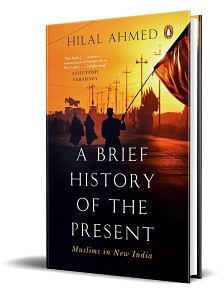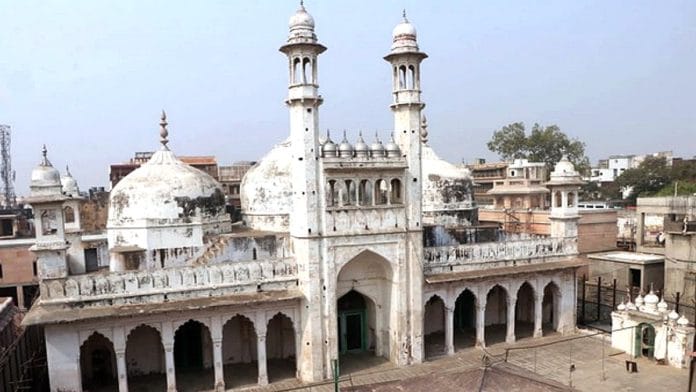The Gyanvapi debate and its close association with Aurangzeb points towards a much bigger question—the foreign origin of Islam and the alien nature of Muslim heritage. In an October 2022 article, Pratap Bhanu Mehta has made a very persuasive argument in this regard. He argues that Hinduism should not be envisaged as a product of colonial knowledge.
Mehta recognizes the decisive role of British colonialism in producing a deeply problematic imagination of India’s past. Yet, he does not subscribe to the view that Hinduism is an artificial entity that did not exist in the precolonial period. He claims that this kind of intellectual laziness is not capable of dealing with the serious challenges posed by the Hindutva project.
Mehta’s thesis, in my view, cannot entirely be reduced to the ‘Hinduism versus Hindutva’ debate, which we discussed in the previous chapter. His revisionist approach encourages us to revisit a few critical and uncomfortable historical issues associated with Islam and Muslims. The foreign origin of Islam is a very relevant question in this regard. Hindutva politics evokes this issue to claim that there is an inevitable civilizational conflict between Islam and Hinduism.
This conflict, the argument goes, can only be resolved if Muslim communities in India take responsibility for the acts and wrongdoings of medieval Muslim invaders. In other words, Muslims have to accept the supremacy of Hindutva’s explanation of India’s past, present and future.
Interestingly, the opponents of Hindutva employ a particular kind of historical reductionism to engage with such politically motivated formulations. The scope of the British’s divide-and-rule politics is expanded to discard the claims made by colonial historians.
At the same time, a neat, clean and harmonious imagination of medieval India is produced and sustained to reject Hindutva as an intellectually inferior and historically irrelevant political project. A revised version of this self-claimed secular imagination evolved in the 1990s, especially after the demolition of Babri Masjid. In order to refute the everyday demonization of Muslims, a section of historians began to celebrate Muslim rule and Muslim rulers.
This aggressive representation of Muslim rulers as secular figures contributed significantly to the Hindutva project. A new war of symbols began in the public domain even before the advent of Hindutva’s political–electoral success. Rana Pratap, Shivaji and Padmini emerged as Hindu icons; while Akbar, Aurangzeb and Allauddin Khilji eventually became symbols of Muslim pride!
It is true that colonial history constructed a puzzling picture of India’s past. The periodization of Indian history into ancient (Hindu/Buddhist-dominated), medieval (Muslim-dominated), and modern (British-dominated) has conditioned us to imagine India as a land of conflict and trouble. It is also true that the Hindutva project has relied heavily on colonial historiography to shape its politics. Yet, one should not overstretch the role of colonial knowledge while engaging with contemporary concerns and anxieties.
Also read: Indian Muslims are fighting for Right to Have Rights. Hindutva is now the only game in town
Let us discuss the debate on the ‘foreign origin’ of Islam. According to Hindutva groups, Islam is an alien religion because it did not originate on Indian soil. For this reason, they claim, Muslims cannot follow the pure and unadulterated Indian culture and ethos. V.D. Savarkar’s famous punya bhumi argument is often used to justify this assertion.
We must note that this is actually a political question that revolves around a particular kind of postcolonial map-centred imagination of ‘inside’ and ‘outside’. The official map of the Republic of India is seen as a permanent historical marker to define the tangible boundaries of the Hindu faith. This schema helps them to declare Islam and Christianity as alien religions.
Hindutva’s obsession with boundaries and maps has its own limitations. A map becomes politically relevant when it is recognized as a cultural icon. This is only possible in a modern context where maps are circulated in a variety of ways for different purposes. It is easy for a twenty-first-century individual to visualize India’s map as a reliable source to think of the internal and external borders of the nation and its faith communities.
However, this is not possible in a precolonial context. Individuals and communities did not have access to the map of the region, and for that matter, the state/empire they belonged to. They, of course, had a sense of ‘boundary’; but it was qualitatively different from our modern perceptions.
This was also true about their religion. They did not have printed copies of religious texts such as the Bhagavad Gita and the Quran. Similarly, the printed images of holy religious places or key religious figures were also not available to them. The religion was an amalgamation of a set of beliefs, rituals and practices.
They were conscious of the distinctiveness of their faith and the operative status of caste relations. Yet, they did not have the resources to envisage Hinduism and Islam as world civilizations.
For instance, a Muslim individual of fifteenth-century Banaras might have been fully aware of the direction of Mecca. But for him/her, Mecca was certainly outside of his/her geographical location. However, there wasn’t any possibility of treating this imagination of the ‘outside’ as a criterion to define his/her Islamic belief as an alien religion. Political philosopher Sudipta Kaviraj uses the expression ‘fuzzy community’ to explain this phenomenon.
Colonialism affected the self-perception of fuzzy communities and eventually transformed them into ‘enumerated communities’ such as Hindus and Muslims. This historical explanation exposes the inherent weaknesses in the Hindutva’s conflict of civilizations thesis. Pratap Bhanu Mehta, however, does not want us to stop here. Instead, he pushes us to historicize the postcolonial political experiences more profoundly.
The existence of Pakistan on the map of South Asia, we must note, substantiates the old debate on Muslim separatism. The Hindutva claim that Muslims in India must always prove their patriotism and loyalty stems from this separatist imagination. The scope of this argument has been expanded in the last few years.
Every aspect of Muslim social life is seen primarily as an anti-India/anti-Hindu act. Hindu–Muslim identities are very well defined as antagonistic entities and the principles of democratic accommodation are under threat.
However, there is another, and in a way, more creative way to look at the Hindutva critique. The decline of what is often called the Nehruvian consensus has paved the way to revisit some of the most fundamental questions of our political life. The Muslim presence in India, in this sense, is perhaps the most important issue in this regard.
Hindutva groups have a very well-defined position on Muslim presence. The opponents of Hindutva, as we have argued in the previous sections, are clueless and confused. They have realized that addressing Muslims merely as a religious minority is not going to work in a Hindutva-dominated political environment. At the same time, they are not enthusiastic about offering any alternative possibility to establish inclusiveness as a political virtue.
Precisely for this reason, we need to assert a basic premise: Muslim heritage in contemporary India must be separated from the foreign origin of Islam thesis. Of course, Islam did not originate in India; yet it travelled to this land in a variety of ways as an idea when the notion of boundaries and borders were not imagined in the modern nation–state framework.
The postcolonial Muslim political identity, on the other hand, originated in India as a rejection of European-style political system based on one nation-one religion-one culture. Muslim heritage, in this sense, is not merely related to those individuals and communities that recognize themselves as Muslims; instead, it is a defining feature of India’s political existence as a democratic republic.
 This excerpt from ‘A Brief History of the Present: Muslims in New India’ by Hilal Ahmed has been published with permission from Penguin Random House.
This excerpt from ‘A Brief History of the Present: Muslims in New India’ by Hilal Ahmed has been published with permission from Penguin Random House.






